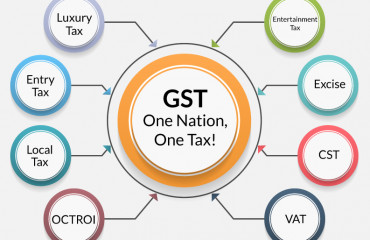
The fiscal deficit may be a “little worse" in absolute terms than estimated in the budget because of the government’s rising expenditure bill—the result of the rupee’s slide, high global commodity prices, and tax cuts—finance secretary T.V. Somanathan said.
The fiscal deficit may be a "little worse" in absolute terms than estimated in the budget because of the government's rising expenditure bill—the result of the rupee's slide, high global commodity prices, and tax cuts—finance secretary T.V. Somanathan said.
But higher-than-expected inflation and nominal GDP are expected to help moderate the fiscal deficit when measured as a ratio of gross domestic product. In the Union Budget, the government estimated the deficit to be 6.4% of GDP. Nominal GDP growth is likely to be higher than the 11.1% estimated in the February budget, he said in an interview.
Somanathan's comments come amid soaring inflation and a mounting subsidy bill because the Ukraine war has caused prices of key imports to shoot up. The impact of the high commodity prices has been worsened by the slide in the rupee against the dollar.
But while a widening fiscal deficit—the difference between what a government earns and what it spends—may spell bad news at first glance, Somanathan made it clear the government will not cut capital expenditure to contain the fiscal deficit.
Rather, it would seek to control revenue expenditure by cutting "avoidable spending", said Somanathan, amid concerns of a private investment slowdown due to interest rate increases.
Capital expenditure, typically the amount the government spends on creating infrastructure assets, has a multiplier effect and is key to the economy that is expected to grow 26.6% this fiscal, according to budget estimates.
He added that fertilizer subsidies alone might more than double to ₹2.5 trillion in the current fiscal from ₹1.05 trillion allocated in the budget due to the impact of high global prices and the sharp depreciation in the rupee.
"In absolute terms, the fiscal deficit might be a little worse…but in terms of percentage of GDP, it may not change as there is a possibility that nominal GDP will grow faster than estimated earlier due to high inflation. We may see what we can do to control revenue expenditure. We will not be restraining capital expenditure. Other expenditures, we will try to control as much as possible," Somanathan said.
On the revenue side, he said while revenue from the goods and services tax and direct taxes might be better than expected, excise duty will likely be lower than predicted in the budget due to duty cuts on petrol and diesel in May.
"While there will be better revenues, as GST collections are better than expected and direct taxes are doing well, it will not be enough to offset the expenditure increase," Somanathan said.
He added that predicting gains from the windfall tax on crude oil production would be difficult. "Windfall tax gets reset every fortnight, so it is difficult to predict and is speculative. This fortnight it came down as refining margins came down over the last 2-3 weeks. There is no predictability about that. If oil prices keep rising, it will translate into revenues, as it will be a good hedge against other negative consequences of oil prices rising. It is more like a security blanket for the government. If oil prices don't go up, then we will not get much revenue from it," said Somanathan.
While wholesale inflation is hovering at record high levels of 15%, retail inflation is also at over 7%. The nominal GDP gets magnified due to high inflation as it measures a country's GDP using current prices without adjusting for inflation.
The government had in the FY23 budget raised the capital spending target to ₹7.5 trillion from ₹5.5 trillion in the previous budget, with a view that it will "crowd in" private investment and spur job creation.
"We remain committed to the capex programme. The execution, or the ability to absorb, is in the hands of various executing ministries. Railways and roads will be able to utilize it. States also, most of it they will utilize. So, if there is a shortfall, it will not be due to financial constraints imposed from our side," Somanathan said.
The widening of the fiscal deficit means the government will need to look for means to finance the revenue gap, such as borrowing from the market.
Out of the gross market borrowing of ₹14.31 trillion estimated for FY23, ₹8.45 trillion, or 59%, is planned to be borrowed in the first half of the fiscal.
"If the free foodgrain scheme is not extended, then the extent of absolute fiscal slippage may not be very large. If small savings schemes' interest rates are increased in the second half, then additional funds may be garnered through that route which could prevent the dated borrowing programme from having to be increased," said Aditi Nayar, chief economist, ICRA.
The Asian Development Bank, which lowered the growth forecast for India to 7.2% for 2022-23 from 7.5% estimated in April, pointed out that private investment will soften due to the higher cost of borrowing for firms as RBI continues to raise interest rates to contain inflation.
The record depreciation of the rupee against the dollar is likely to result in a ballooning of the fertilizer subsidy bill for the current fiscal. It also remains unclear if the free foodgrain scheme introduced during the initial days of the pandemic will be extended beyond September.
"The fertilizer subsidy could touch ₹2.5 trillion for FY23 due to rupee depreciation, but will certainly be more than ₹2.1-2.2 trillion. There is no decision yet on whether the Pradhan Mantri Garib Kalyan Anna Yojana (PMGKAY) will be extended further," Somanathan said.
While the budget had allocated ₹1.05 trillion towards fertilizer subsidy, finance minister Nirmala Sitharaman had in May announced providing an additional fertilizer subsidy of ₹1.10 trillion to cushion farmers from the price rise.
